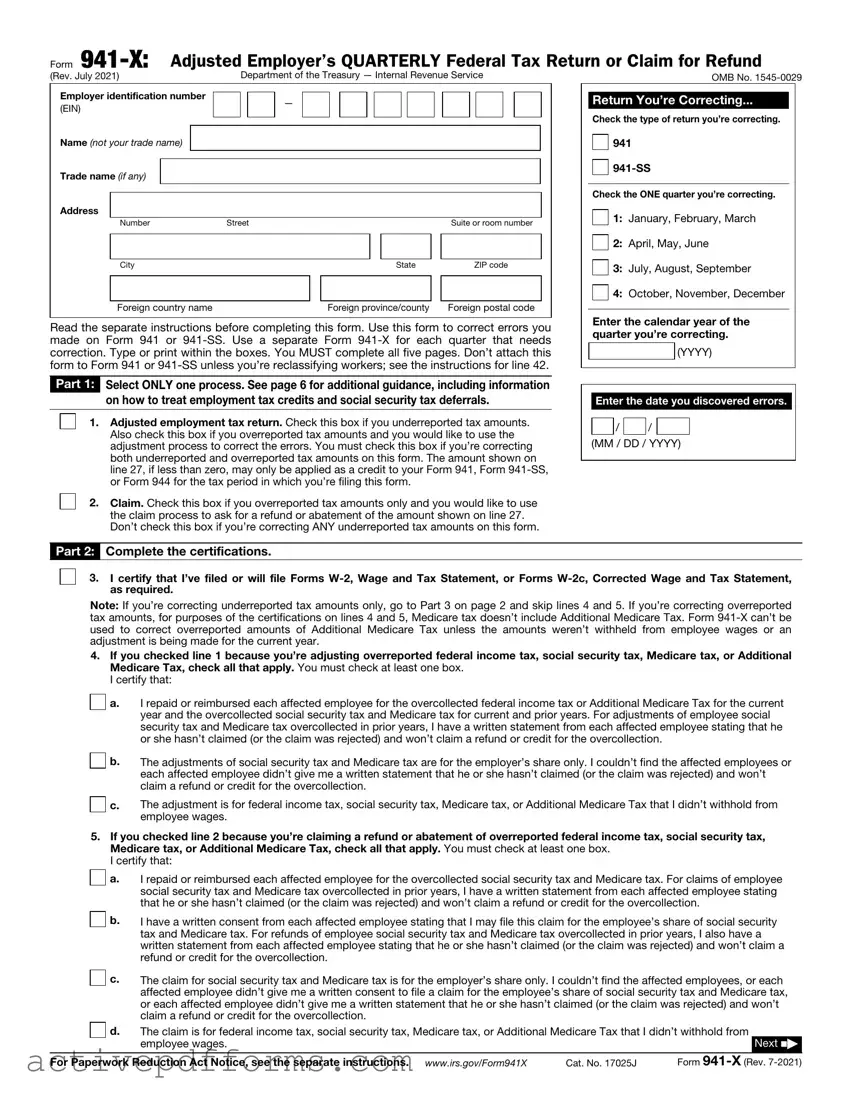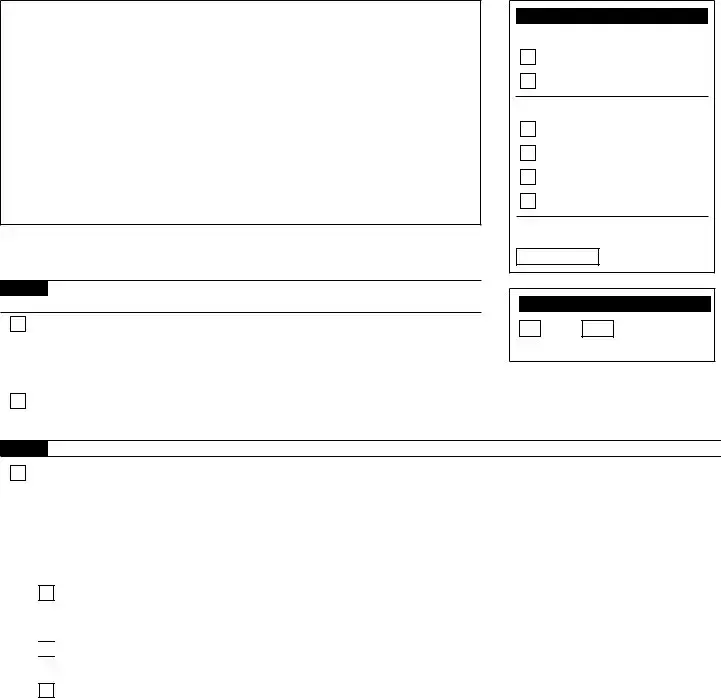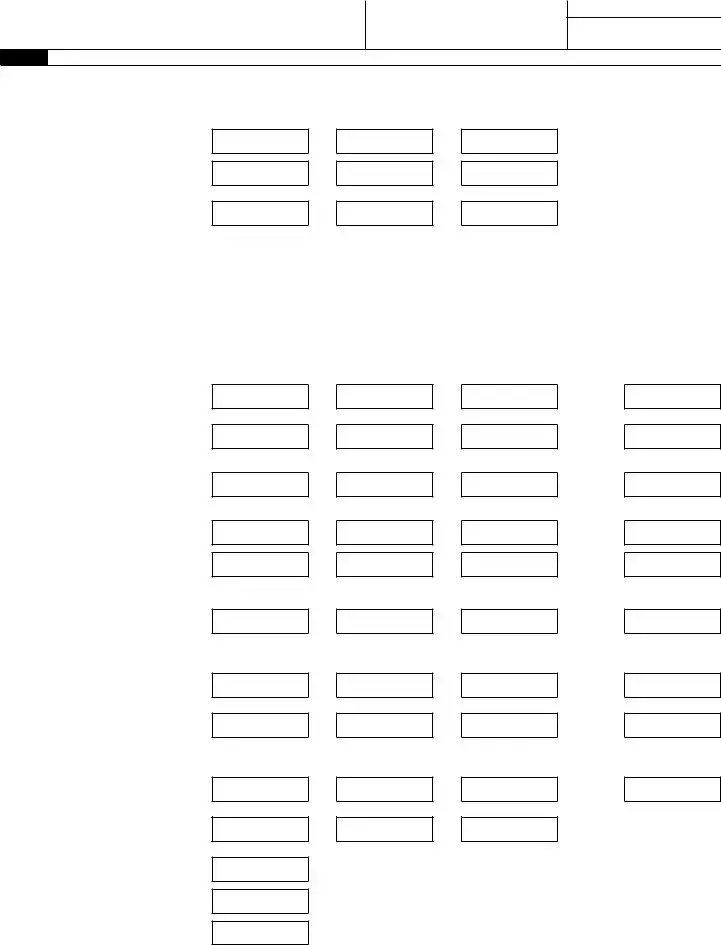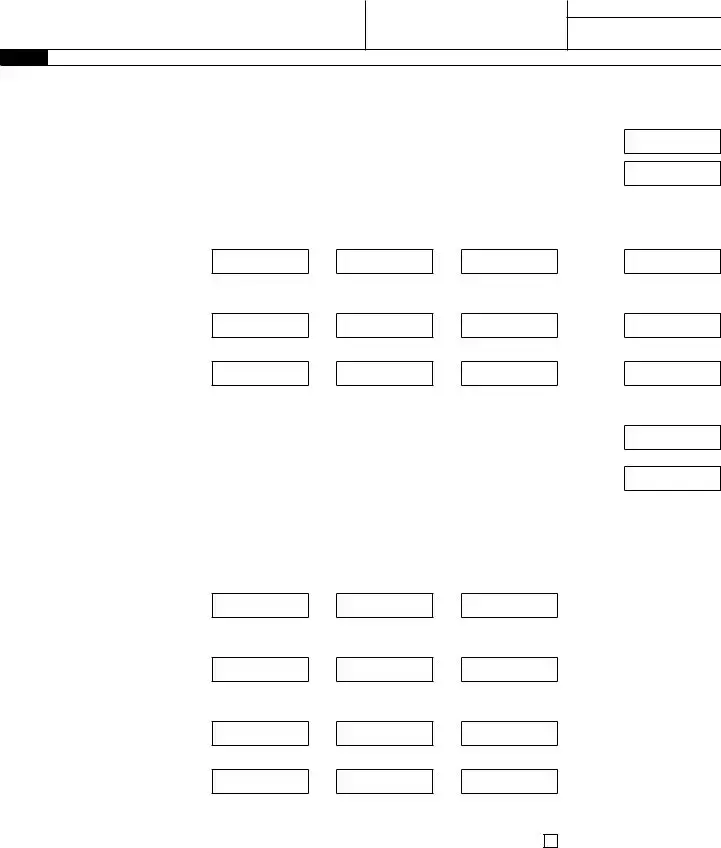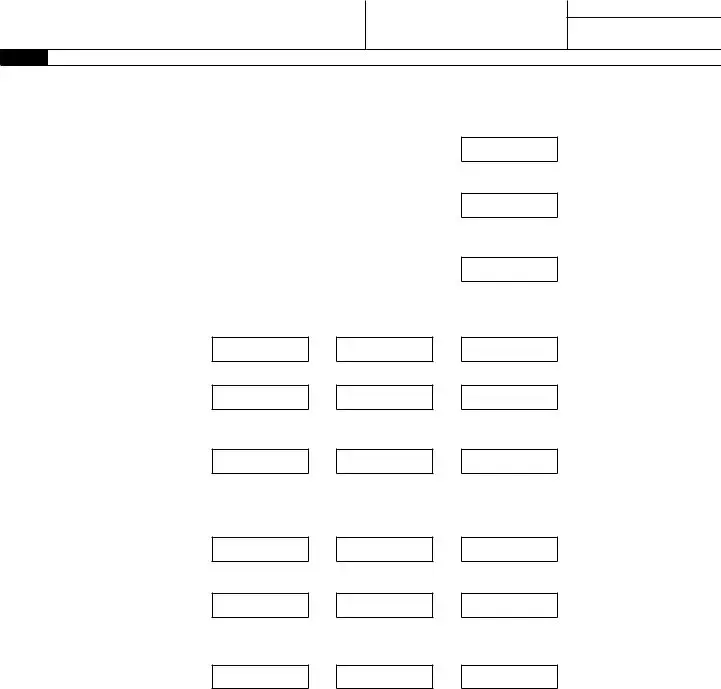Form 941-X: Adjusted Employer’s QUARTERLY Federal Tax Return or Claim for Refund
(Rev. July 2021) |
Department of the Treasury — Internal Revenue Service |
OMB No. 1545-0029 |
Employer identification number |
|
|
|
— |
|
|
|
|
|
|
|
|
|
|
|
|
|
(EIN) |
|
|
|
|
|
|
|
|
|
|
|
|
|
|
|
|
|
|
|
|
|
|
|
|
|
|
|
|
|
|
|
|
|
|
|
|
|
|
|
|
|
|
|
|
|
|
|
|
|
|
|
|
|
|
|
|
|
|
|
|
|
|
|
|
|
|
|
|
|
|
|
|
|
|
|
Name (not your trade name) |
|
|
|
|
|
|
|
|
|
|
|
|
|
|
|
|
|
|
|
|
|
|
|
|
|
|
|
|
|
|
|
|
|
|
|
|
|
|
|
|
|
|
|
|
|
|
|
|
|
|
|
|
|
|
|
|
|
|
|
Trade name (if any) |
|
|
|
|
|
|
|
|
|
|
|
|
|
|
|
|
|
|
Address |
|
|
|
|
|
|
|
|
|
|
|
|
|
|
|
|
|
|
|
|
|
|
|
|
|
|
|
|
|
|
|
|
|
|
|
|
|
|
|
|
|
|
|
|
|
|
|
|
|
|
|
|
|
|
|
Number |
Street |
|
|
|
Suite or room number |
|
|
|
|
|
|
|
|
|
|
|
|
|
|
|
|
City |
|
|
|
|
State |
|
ZIP code |
|
|
|
|
|
|
|
|
|
|
|
|
|
|
|
|
Foreign country name |
Foreign province/county |
Foreign postal code |
Read the separate instructions before completing this form. Use this form to correct errors you made on Form 941 or 941-SS. Use a separate Form 941-X for each quarter that needs correction. Type or print within the boxes. You MUST complete all five pages. Don’t attach this form to Form 941 or 941-SS unless you’re reclassifying workers; see the instructions for line 42.
Return You’re Correcting...
Check the type of return you’re correcting.
941
941-SS
Check the ONE quarter you’re correcting.
1: January, February, March
2: April, May, June
3: July, August, September
4: October, November, December
Enter the calendar year of the quarter you’re correcting.
(YYYY)
Part 1: Select ONLY one process. See page 6 for additional guidance, including information on how to treat employment tax credits and social security tax deferrals.
1.Adjusted employment tax return. Check this box if you underreported tax amounts. Also check this box if you overreported tax amounts and you would like to use the adjustment process to correct the errors. You must check this box if you’re correcting both underreported and overreported tax amounts on this form. The amount shown on line 27, if less than zero, may only be applied as a credit to your Form 941, Form 941-SS, or Form 944 for the tax period in which you’re filing this form.
2. Claim. Check this box if you overreported tax amounts only and you would like to use the claim process to ask for a refund or abatement of the amount shown on line 27. Don’t check this box if you’re correcting ANY underreported tax amounts on this form.
Enter the date you discovered errors.
(MM / DD / YYYY)
Part 2: Complete the certifications.
3.I certify that I’ve filed or will file Forms W-2, Wage and Tax Statement, or Forms W-2c, Corrected Wage and Tax Statement, as required.
Note: If you’re correcting underreported tax amounts only, go to Part 3 on page 2 and skip lines 4 and 5. If you’re correcting overreported tax amounts, for purposes of the certifications on lines 4 and 5, Medicare tax doesn’t include Additional Medicare Tax. Form 941-X can’t be used to correct overreported amounts of Additional Medicare Tax unless the amounts weren’t withheld from employee wages or an adjustment is being made for the current year.
4.If you checked line 1 because you’re adjusting overreported federal income tax, social security tax, Medicare tax, or Additional Medicare Tax, check all that apply. You must check at least one box.
I certify that:
a.I repaid or reimbursed each affected employee for the overcollected federal income tax or Additional Medicare Tax for the current year and the overcollected social security tax and Medicare tax for current and prior years. For adjustments of employee social security tax and Medicare tax overcollected in prior years, I have a written statement from each affected employee stating that he or she hasn’t claimed (or the claim was rejected) and won’t claim a refund or credit for the overcollection.

 b. The adjustments of social security tax and Medicare tax are for the employer’s share only. I couldn’t find the affected employees or each affected employee didn’t give me a written statement that he or she hasn’t claimed (or the claim was rejected) and won’t claim a refund or credit for the overcollection.
b. The adjustments of social security tax and Medicare tax are for the employer’s share only. I couldn’t find the affected employees or each affected employee didn’t give me a written statement that he or she hasn’t claimed (or the claim was rejected) and won’t claim a refund or credit for the overcollection.
c.The adjustment is for federal income tax, social security tax, Medicare tax, or Additional Medicare Tax that I didn’t withhold from employee wages.
5.If you checked line 2 because you’re claiming a refund or abatement of overreported federal income tax, social security tax, Medicare tax, or Additional Medicare Tax, check all that apply. You must check at least one box.
I certify that:
|
|
a. |
I repaid or reimbursed each affected employee for the overcollected social security tax and Medicare tax. For claims of employee |
|
|
|
social security tax and Medicare tax overcollected in prior years, I have a written statement from each affected employee stating |
|
|
|
that he or she hasn’t claimed (or the claim was rejected) and won’t claim a refund or credit for the overcollection. |
|
|
b. |
I have a written consent from each affected employee stating that I may file this claim for the employee’s share of social security |
|
|
|
tax and Medicare tax. For refunds of employee social security tax and Medicare tax overcollected in prior years, I also have a |
|
|
|
written statement from each affected employee stating that he or she hasn’t claimed (or the claim was rejected) and won’t claim a |
|
|
|
refund or credit for the overcollection. |
|
|
|
|
|
c. |
The claim for social security tax and Medicare tax is for the employer’s share only. I couldn’t find the affected employees, or each |
|
|
|
|
|
affected employee didn’t give me a written consent to file a claim for the employee’s share of social security tax and Medicare tax, |
|
|
|
or each affected employee didn’t give me a written statement that he or she hasn’t claimed (or the claim was rejected) and won’t |
|
|
|
claim a refund or credit for the overcollection. |
|
|
|
|
|
d. |
The claim is for federal income tax, social security tax, Medicare tax, or Additional Medicare Tax that I didn’t withhold from |
|
|
|
employee wages. |
|
|
Next ■▶ |
|
|
|
|
For Paperwork Reduction Act Notice, see the separate instructions. www.irs.gov/Form941X |
Cat. No. 17025J |
Form 941-X (Rev. 7-2021) |
Name (not your trade name) |
Employer identification number (EIN) |
Correcting quarter |
(1, 2, 3, 4) |
Correcting calendar year (YYYY)
Part 3: Enter the corrections for this quarter. If any line doesn’t apply, leave it blank.
Column 1 |
Column 2 |
Column 3 |
Column 4 |
6. |
Wages, tips, and other |
|
compensation (Form 941, line 2) |
7. |
Federal income tax withheld |
|
from wages, tips, and other |
|
compensation (Form 941, line 3) |
8. |
Taxable social security wages |
|
(Form 941 or 941-SS, line 5a, |
|
Column 1) |
Total corrected amount (for ALL employees)
.
.
.
Amount originally reported or as
—previously corrected (for ALL employees)
—.
—.
—.
Difference
(If this amount is a negative number, use a minus sign.)
.
.
.
Tax correction
Use the amount in Column 1 when you prepare your Forms W-2 or Forms W-2c.
Copy Column |
. |
3 here ▶ |
|
|
|
|
× 0.124* = |
. |
9. |
Qualified sick leave wages* |
|
(Form 941 or 941-SS, line 5a(i), |
|
Column 1) |
|
|
|
|
* If you’re correcting your employer share only, use 0.062. See instructions. |
|
— |
|
= |
|
|
|
|
. |
. |
|
. |
× 0.062 = |
. |
* Use line 9 only for qualified sick leave wages paid after March 31, 2020, for leave taken before April 1, 2021.
10.Qualified family leave wages* (Form 941 or 941-SS, line 5a(ii), Column 1)
11.Taxable social security tips (Form 941 or 941-SS, line 5b, Column 1)
* Use line 10 only for qualified family leave wages paid after March 31, 2020, for leave taken before April 1, 2021.
* If you’re correcting your employer share only, use 0.062. See instructions.
12.Taxable Medicare wages & tips (Form 941 or 941-SS, line 5c, Column 1)
* If you’re correcting your employer share only, use 0.0145. See instructions.
13. |
Taxable wages & tips subject to |
|
Additional Medicare Tax |
|
withholding (Form 941 or |
|
941-SS, line 5d) |
* Certain wages and tips reported in Column 3 shouldn’t be multiplied by 0.009. See instructions.
14. |
Section 3121(q) Notice and |
|
Demand—Tax due on |
|
unreported tips (Form 941 or |
|
941-SS, line 5f) |
15. |
Tax adjustments (Form 941 or |
|
941-SS, lines 7 through 9) |
16. |
Qualified small business payroll tax |
|
credit for increasing research |
|
activities (Form 941 or 941-SS, line |
|
11a; you must attach Form 8974) |
17. |
Nonrefundable portion of credit |
|
for qualified sick and family |
|
leave wages for leave taken |
|
before April 1, 2021 (Form 941 |
|
or 941-SS, line 11b) |
18a. Nonrefundable portion of employee retention credit
(Form 941 or 941-SS, line 11c)
18b. Nonrefundable portion of credit for qualified sick and family leave wages for leave taken after March 31, 2021 (Form 941
or 941-SS, line 11d)
18c. Nonrefundable portion of COBRA premium assistance credit
(Form 941 or 941-SS, line 11e)
18d. Number of individuals provided COBRA premium assistance
(Form 941 or 941-SS, line 11f)
Copy Column 3 here ▶
Copy Column 3 here ▶
See instructions
See instructions
See instructions
See instructions
See instructions
19.Special addition to wages for federal income tax
20.Special addition to wages for social security taxes
21.Special addition to wages for Medicare taxes
|
. |
= |
. |
See |
. |
|
|
instructions |
|
|
= |
|
See |
|
|
. |
. |
. |
|
|
instructions |
|
|
= |
|
See |
|
|
. |
. |
. |
|
|
instructions |
Next ■▶
Page 2 |
Form 941-X (Rev. 7-2021) |
Name (not your trade name) |
Employer identification number (EIN) |
Correcting quarter |
(1, 2, 3, 4) |
Correcting calendar year (YYYY)
Part 3: Enter the corrections for this quarter. If any line doesn’t apply, leave it blank. (continued)
|
|
Column 1 |
|
|
Column 2 |
|
Column 3 |
|
|
|
Total corrected |
|
|
Amount originally |
|
Difference |
|
|
|
amount (for ALL |
|
reported or as |
= |
(If this amount is a |
|
|
|
employees) |
|
— |
previously corrected |
negative number, |
|
|
|
|
|
|
(for ALL employees) |
|
use a minus sign.) |
|
22. |
Special addition to wages for |
|
. |
— |
. |
= |
. |
See |
|
Additional Medicare Tax |
|
|
|
|
|
instructions |
23. |
Combine the amounts on lines 7 through 22 of Column 4 |
Column 4
Tax correction
.
.
24.Deferred amount of social security tax* (Form 941 or 941-SS, line 13b)
. |
— |
. |
= |
. |
See |
. |
|
|
instructions |
* Use this line to correct the employer deferral for the second quarter of 2020 and the employer and employee deferral for the third and fourth quarters of 2020.
25.Refundable portion of credit for qualified sick and family leave wages for leave taken before April 1, 2021 (Form 941 or 941- SS, line 13c)
26a. Refundable portion of employee
retention credit (Form 941 or 941-SS, line 13d)
26b. Refundable portion of credit for qualified sick and family leave wages for leave taken after March 31, 2021 (Form 941 or 941-SS, line 13e)
See instructions
See instructions
26c. |
Refundable portion of COBRA |
. |
— |
. |
= |
. |
See |
|
premium assistance credit |
|
|
|
instructions |
|
(Form 941 or 941-SS, line 13f) |
|
|
|
|
|
|
27. |
Total. Combine the amounts on lines 23 through 26c of Column 4 |
|
If line 27 is less than zero: |
|
|
|
|
|
|
•If you checked line 1, this is the amount you want applied as a credit to your Form 941 or 941-SS for the tax period in which you’re filing this form. (If you’re currently filing a Form 944, Employer’s ANNUAL Federal Tax Return, see the instructions.)
•If you checked line 2, this is the amount you want refunded or abated.
If line 27 is more than zero, this is the amount you owe. Pay this amount by the time you file this return. For information on how to pay, see Amount you owe in the instructions.
28.Qualified health plan expenses allocable to qualified sick leave wages for leave taken before April 1, 2021 (Form 941 or 941- SS, line 19)
29.Qualified health plan expenses allocable to qualified family leave wages for leave taken before April 1, 2021 (Form 941 or 941-SS, line 20)
30.Qualified wages for the employee retention credit (Form 941 or 941-SS, line 21)
31a. Qualified health plan expenses for the employee retention credit
(Form 941 or 941-SS, line 22)
31b. Check here if you’re eligible for the employee retention credit in the third or fourth quarter of 2021 solely because your business is a recovery startup business . . . . . . . . . . . .
32.Credit from Form 5884-C, line 11, for this quarter* (Form 941 or 941-SS, line 23)
* Use line 32 to correct only the second, third, and fourth quarters of 2020, and the first quarter of 2021.
Page 3 |
Form 941-X (Rev. 7-2021) |
Name (not your trade name) |
Employer identification number (EIN) |
Correcting quarter |
(1, 2, 3, 4) |
Correcting calendar year (YYYY)
Part 3: Enter the corrections for this quarter. If any line doesn’t apply, leave it blank. (continued)
Column 1 |
Column 2 |
Column 3 |
33a. Qualified wages paid March 13 through March 31, 2020, for the employee retention credit*
(Form 941 or 941-SS, line 24)
33b. Deferred amount of the employee share of social security tax included on Form 941 or 941-SS, line 13b*
(Form 941 or 941-SS, line 24)
|
Total corrected |
|
Amount originally |
|
|
amount (for ALL |
|
reported or as |
= |
|
employees) |
— |
previously corrected |
|
|
|
(for ALL employees) |
|
|
|
— |
|
= |
|
. |
. |
|
|
|
|
|
|
|
|
* Use line 33a to correct only the second quarter of 2020.
* Use line 33b to correct only the third and fourth quarters of 2020.
Difference
(If this amount is a negative number, use a minus sign.)
.
.
34. |
Qualified health plan expenses |
. |
— |
. |
|
allocable to wages reported on |
|
|
|
Form 941 or 941-SS, line 24* |
|
|
|
|
* Use line 34 to correct only the second quarter of 2020. |
|
(Form 941 or 941-SS, line 25) |
|
|
|
Caution: Lines 35–40 apply only to quarters beginning after March 31, 2021.
35.Qualified sick leave wages for leave taken after March 31, 2021 (Form 941 or 941-SS, line 23)
36.Qualified health plan expenses allocable to qualified sick leave wages for leave taken after March 31, 2021 (Form 941 or 941-SS, line 24)
37.Amounts under certain collectively bargained agreements allocable to qualified sick leave wages for leave taken after March 31, 2021 (Form 941 or 941-SS, line 25)
38.Qualified family leave wages for leave taken after March 31, 2021 (Form 941 or 941-SS, line 26)
39.Qualified health plan expenses allocable to qualified family leave wages for leave taken after March 31, 2021 (Form 941 or 941-SS, line 27)
40.Amounts under certain collectively bargained agreements allocable to qualified family leave wages for leave taken after March 31, 2021 (Form 941 or 941-SS, line 28)
Page 4 |
Form 941-X (Rev. 7-2021) |
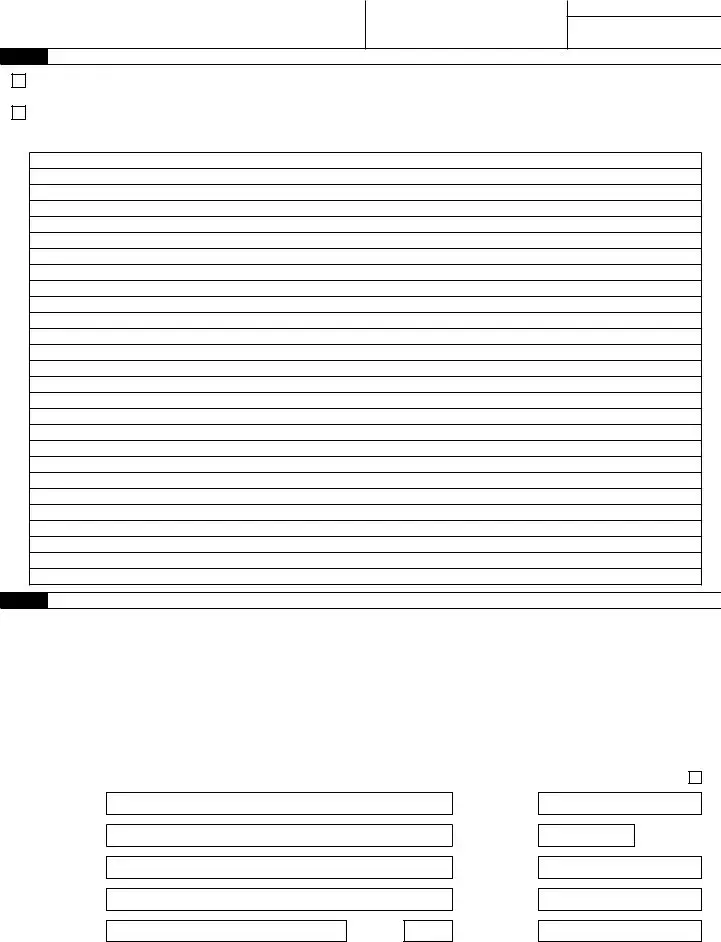
Name (not your trade name) |
Employer identification number (EIN) |
Correcting quarter |
(1, 2, 3, 4) |
Correcting calendar year (YYYY)
Part 4: Explain your corrections for this quarter.
41. Check here if any corrections you entered on a line include both underreported and overreported amounts. Explain both your underreported and overreported amounts on line 43.
42. Check here if any corrections involve reclassified workers. Explain on line 43.
43.You must give us a detailed explanation of how you determined your corrections. See the instructions.
Part 5: Sign here. You must complete all five pages of this form and sign it.
Under penalties of perjury, I declare that I have filed an original Form 941 or Form 941-SS and that I have examined this adjusted return or claim, including accompanying schedules and statements, and to the best of my knowledge and belief, it is true, correct, and complete. Declaration of preparer (other than taxpayer) is based on all information of which preparer has any knowledge.
✗ |
|
|
|
|
|
Print your |
|
|
|
|
|
|
|
|
|
|
|
|
|
Sign your |
|
|
|
|
name here |
|
|
|
|
|
|
|
|
Print your |
|
|
|
|
name here |
|
|
|
|
|
|
|
|
|
|
|
|
|
|
|
|
|
|
|
|
|
title here |
|
|
|
|
|
|
|
|
|
|
|
|
|
|
|
|
|
|
|
|
|
|
|
Date |
|
/ |
/ |
|
Best daytime phone |
|
|
|
|
|
|
|
|
Paid Preparer Use Only |
|
|
|
Check if you’re self-employed . . . |
|
Preparer’s name
Preparer’s signature
Firm’s name (or yours if self-employed)
Address
City
PTIN
Date
EIN
Phone
ZIP code
Page 5 |
Form 941-X (Rev. 7-2021) |
Form 941-X: Which process should you use?
|
|
Unless otherwise specified in the separate instructions, an underreported employment tax credit or social |
|
|
security tax deferral should be treated like an overreported tax amount. An overreported employment tax credit |
|
Type of errors |
or social security tax deferral should be treated like an underreported tax amount. For more information, |
|
including which process to select on lines 1 and 2, see Correcting an employment tax credit or social security tax |
|
you’re correcting |
|
deferral in the separate instructions. |
|
|
|
|
|
|
Underreported |
Use the adjustment process to correct underreported tax amounts. |
|
• Check the box on line 1. |
|
tax amounts |
|
ONLY |
• Pay the amount you owe from line 27 by the time you file Form 941-X. |
Overreported tax amounts
ONLY
The process you use depends on when you file Form 941-X.
|
If you’re filing Form 941-X |
Choose either the adjustment process or the claim |
|
MORE THAN 90 days before |
process to correct the overreported tax amounts. |
|
the period of limitations on |
Choose the adjustment process if you want the |
|
credit or refund for Form 941 |
|
amount shown on line 27 credited to your Form 941, |
|
or Form 941-SS expires... |
|
Form 941-SS, or Form 944 for the period in which you |
|
|
|
|
file Form 941-X. Check the box on line 1. |
|
|
OR |
|
|
Choose the claim process if you want the amount |
|
|
shown on line 27 refunded to you or abated. Check |
|
|
the box on line 2. |
|
|
|
|
If you’re filing Form 941-X |
You must use the claim process to correct the |
|
WITHIN 90 days of the |
overreported tax amounts. Check the box on line 2. |
|
expiration of the period of |
|
|
limitations on credit or refund |
|
|
for Form 941 or Form 941-SS... |
|
BOTH underreported and overreported tax amounts
The process you use depends on when you file Form 941-X.
|
If you’re filing Form 941-X |
Choose either the adjustment process or both the |
|
MORE THAN 90 days before |
adjustment process and the claim process when you |
|
the period of limitations on |
correct both underreported and overreported tax |
|
credit or refund for Form 941 |
amounts. |
|
or Form 941-SS expires... |
Choose the adjustment process if combining your |
|
|
underreported tax amounts and overreported tax |
|
|
amounts results in a balance due or creates a credit |
|
|
that you want applied to Form 941, Form 941-SS, or |
|
|
Form 944. |
|
|
• File one Form 941-X, and |
|
|
• Check the box on line 1 and follow the instructions |
|
|
on line 27. |
|
|
OR |
|
|
Choose both the adjustment process and the |
|
|
claim process if you want the overreported tax |
|
|
amount refunded to you or abated. |
|
|
File two separate forms. |
|
|
1. For the adjustment process, file one Form 941-X |
|
|
to correct the underreported tax amounts. Check |
|
|
the box on line 1. Pay the amount you owe from |
|
|
line 27 by the time you file Form 941-X. |
|
|
2. For the claim process, file a second Form 941-X |
|
|
to correct the overreported tax amounts. Check |
|
|
the box on line 2. |
|
|
|
|
If you’re filing Form 941-X |
You must use both the adjustment process and |
|
WITHIN 90 days of the |
the claim process. |
|
expiration of the period of |
File two separate forms. |
|
limitations on credit or |
1. For the adjustment process, file one Form 941-X |
|
refund for Form 941 or |
|
to correct the underreported tax amounts. Check |
|
Form 941-SS... |
|
the box on line 1. Pay the amount you owe from |
|
|
|
|
line 27 by the time you file Form 941-X. |
|
|
2. For the claim process, file a second Form 941-X |
|
|
to correct the overreported tax amounts. Check |
|
|
the box on line 2. |
Page 6 |
Form 941-X (Rev. 7-2021) |
